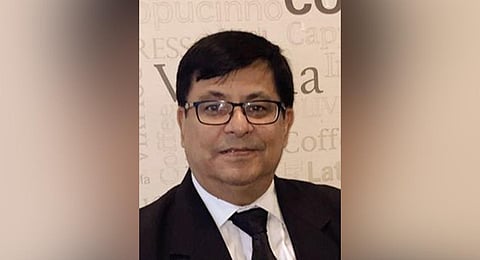

THIRUVANANTHAPURAM: The proposed blood plasma therapy for COVID-19 can cure patients within just 3-7 days, says Dr Debasish Gupta, Professor and Head, Transfusion Medicine, Sree Chitra Tirunal Institute for Medical Sciences and Technology, Trivandrum. Using plasma from one donor, two-five patients can be cured. Medicos are now awaiting a relaxation in donor guidelines from authorities, he said in an interview with The New Indian Express.
What is plasma therapy? How is it done?
Whenever a person is infected with a virus or bacteria, the body's immune system develops an antibody. These antibodies give either a lifelong immune system or short term immunity against that particular microorganism. Patients who recover from the coronavirus develop these antibodies which are the ones used for passive immunisation.
So when a patient recovers, he or she will have the antibodies. There's also no virus present in the patient's blood at the time. This patient can now act like a plasma donor. When he or she donates blood, only the plasma is taken and the remaining blood is returned to the body. You can take 500 ml to a litre of plasma from one person, while in terms of whole blood, you can take only around 350 ml from the donor.
This antibody-rich plasma will then be transfused to affected patients. The antibody present in the transfused plasma will target the virus and the patient is cured. This is called passive immunisation.
There are however a couple of hurdles in plasma collection. There are certain national guidelines for collection of blood and plasma from healthy volunteer donors which have to be followed by all blood banks. Going by these guidelines of donor selection, recovered patients are not eligible to donate. These guidelines are laid down by three bodies under the Ministry of Health and Family Welfare.
One of them is the CDSCO (Central Drug Standards Control Organisation), in short, the Drugs Controller General of India, under which comes the State Dug Controller which issues the licence to blood banks. The guidelines are developed by the DGHS (Director General of Health Services). Then you have the National Blood Transfusion Council.
To take blood from cured patients, we need relaxations in certain aspects of the donor selection criteria, such as the recent history of fevers, respiratory tract infections, bodyaches as well as travel history. In the normal case, presence of any of these factors makes one ineligible. But in the present scenario, these four criteria need to be relaxed.
The remaining criteria still have to be fulfilled by the donor. Once plasma is donated, the blood bank should use it exclusively for COVID-19 patients and no one else. It should be kept separate from the normal plasma pool. If not used for a COVID-19 patients, it should be discarded. Once approval is accorded by the authority, we will start collecting such plasma.
How many patients can be treated using plasma from one recovered patient?
Depending on the volume of plasma we collect from one donor, we can save a minimum of two and a maximum of five patients. Around 200-250 ml is required to cure one patient. Recovery is speedy in such cases. Based on studies, as seen in the US and China, the minimum recovery period is three days and the maximum is seven.
What's the current status of approval?
We are now awaiting approval. The State Health Department can collectively take a decision to bring in the requisite relaxation in this particular context only, so as to enable all blood banks in Kerala to do the same. The Health Department has developed a committee, of which Dr Anup from Kozhikode and I are members. A proposal was developed and submitted recently to the government, seeking clearance. The state drug authority can help by taking it up with the Centre. That would be the easiest route.
Have we zeroed in on any donor patients?
There is first and foremost the matter of pending clearance. Another significant factor is that the first case in the second phase was reported on March 8. The person cured should have completed 28 days, the minimum time gap required before plasma can be collected.
We can obtain the list of patients who have totally recovered and completed the mandatory quarantine period. We would then approach the recovered patients and counsel them if they are found fit to donate. The plasma collected could then be distributed to the various COVID-19 care clinics.
Are there any criteria for patients eligible to receive such therapy?
There are guidelines for the recipient too. In general, they are those severely affected by the virus and suffering from respiratory infections.
Once clearance is obtained, how soon can we start the treatment?
As soon as the clearance is issued, we can start treatment immediately. In fact, from the very next day itself. Identifying the donor is not an issue. The state Health Department already has a list of cured persons. All that needs to be done is for our social workers to approach them.